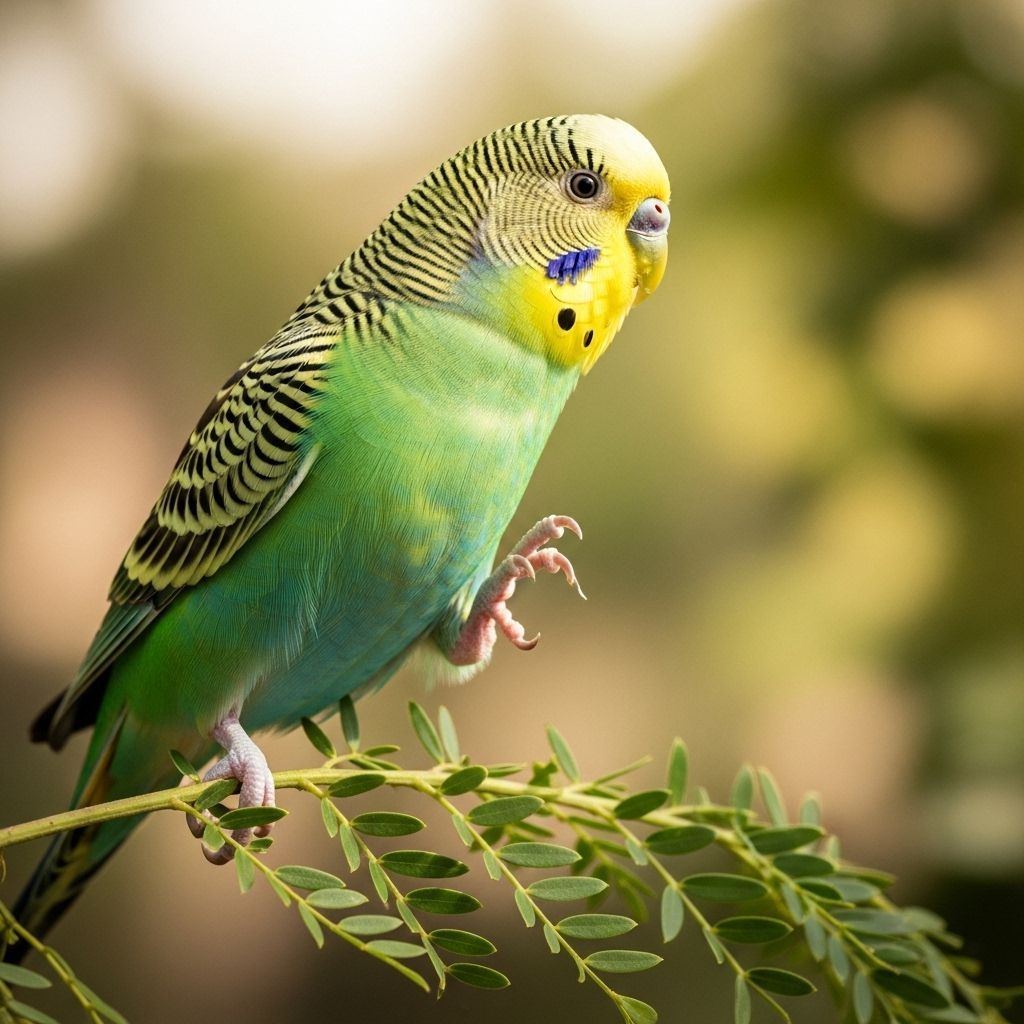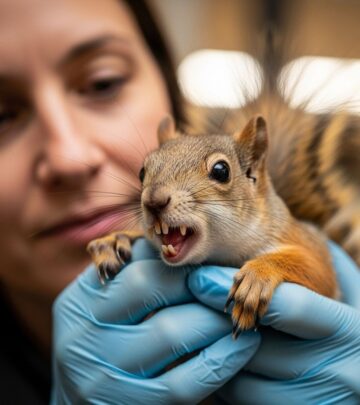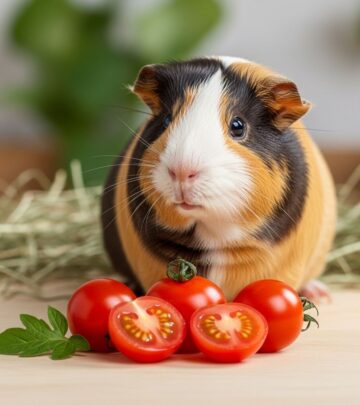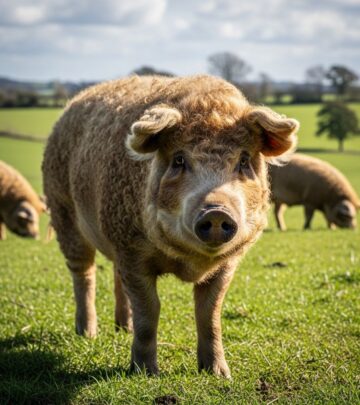Parakeet Lifespan: 6 Essential Tips For A Long, Healthy Life
Discover the lifespan of parakeets, care tips, and how to help your feathered friend live a long, healthy life.

Image: HearthJunction Design Team
How Long Do Parakeets Live?
Parakeets, also widely known as budgerigars or budgies, are small, vibrant birds that have captured the hearts of pet owners across the globe. But if you’re considering welcoming a parakeet into your home, you’re likely wondering about their average lifespan, what factors may influence it, and how you can ensure your feathered friend enjoys a long, healthy life. This comprehensive guide explores parakeet longevity, care requirements, and practical tips for optimizing your bird’s wellbeing.
Parakeet Species Overview
Parakeets are native to the grasslands of Australia, where they live in large flocks and are adapted to a variety of environmental conditions. The species most commonly kept as pets is the Melopsittacus undulatus, or budgerigar. Their name means “songbird with wavy lines,” referencing the characteristic black markings on their bodies and faces. Parakeets are now available in a stunning array of colors, the result of over a century of selective breeding.
- Scientific Name: Melopsittacus undulatus
- Common Names: Parakeet, Budgerigar, Budgie
- Origin: Australia
- Average Adult Size: 7 inches (from head to tip of tail)
- Difficulty of Care: Beginner-friendly
Average Lifespan of Parakeets
The average lifespan of a parakeet varies depending on several factors, including genetics, diet, environment, and quality of care. Generally, parakeets can be expected to live:
- 6 to 10 years with standard care and conditions
- 10 to 12 years with excellent care and optimal environment
- Up to 15 years or more in rare cases with high-quality diet, veterinary care, and enrichment
Most pet parakeets in home environments live between 8 and 12 years, though individual longevity will depend on genetics and lifestyle. Exceptional cases have been reported where parakeets live closer to 15 years or even longer, given meticulous attention to their needs.
Parakeet Characteristics and Vital Stats
| Characteristic | Details |
|---|---|
| Average Lifespan | 6–15 years (most commonly 8–12) |
| Average Adult Size | 7 inches |
| Diet | Grainivorous (mainly seeds, grains, and some greens) |
| Minimum Habitat Size | 18″ W × 18″ D × 18″ H |
| Difficulty of Care | Beginner |
Factors That Influence Parakeet Lifespan
Multiple elements can affect how long a parakeet lives. Here’s what matters most:
- Diet: Parakeets thrive on a balanced diet. In the wild, they primarily eat seeds from various grasses, supplemented with greens, fruits, and occasional protein from insect larvae. In captivity, providing a quality pellet-based diet, supplemented with fresh vegetables and limited fortified seeds, promotes health and longevity.
- Exercise and Enrichment: These birds require space to fly, toys for mental stimulation, and social interaction. A lack of flight or enrichment can lead to obesity and behavioral issues that affect lifespan.
- Veterinary Care: Regular checkups, parasite prevention, and prompt treatment of illnesses are crucial. Many avian illnesses are subtle in early stages, so yearly checkups are recommended.
- Clean Environment: Hygiene in their enclosure and food/water dishes reduces risks of infection. Draft-free, well-ventilated living spaces are essential.
- Genetics: Some birds are simply more robust than others. Purchasing from a reputable breeder, rather than a mass supplier, increases the likelihood of a healthy, long-lived bird.
- Socialization: Parakeets are social creatures and benefit from companionship—either from people or other birds—when introduced properly.
Stages of a Parakeet’s Life
1. Chick (0–3 weeks)
- Hatch after about 18–20 days of incubation
- Completely dependent on parents for warmth and feeding
2. Juvenile (3 weeks–3 months)
- Begins fledging and learning to eat adult foods
- Growth rate is rapid; coloration and markings become clear
- Sex identification possible by 10 months based on cere (nostril area) coloration: blue for most males, brownish-pink for females
3. Adult (3 months–5 years)
- Sexually mature by 6–12 months
- Most active and healthy
4. Senior (5+ years)
- Slowed activity; may show age-related health issues
- Requires extra attention to diet, mobility, and regular vet checkups
Essential Parakeet Care for a Long Life
Diet and Nutrition
- Feed a variety of foods: high-quality pellets (not just seeds), fresh vegetables (e.g., spinach, carrots, broccoli), limited fruit, and clean water every day.
- Seed-only diets are popular but are nutritionally incomplete, often leading to deficiencies and shorter lifespans.
- Offer cuttlebone or mineral blocks to support beak health and calcium intake.
- Fresh, clean water is essential; change daily.
Habitat and Environment
- Cage should be at least 18″ × 18″ × 18″ for a single parakeet, with larger always better.
- Provide multiple perches of varying diameters to prevent foot problems.
- Enclosure should be placed in a draft-free, well-lit area but out of direct sunlight and away from fumes.
- Keep the environment enriched with toys, ladders, swings, and safe branches.
- Allow supervised out-of-cage time for exercise and mental stimulation.
Socialization and Handling
- Parakeets are social birds; frequent interaction helps prevent loneliness and behavioral issues.
- Handle your bird gently and regularly to build trust; single birds may bond closely with their human caregivers.
- If time with your pet is limited, consider having two same-gender birds so they can keep each other company.
Cleanliness and Bathing
- Bathe your parakeet twice a week by misting with lukewarm water or providing a shallow dish for bathing.
- Clean the cage bottom, food dishes, and water dishes daily to prevent disease.
- Maintain overall hygiene, especially after handling raw food or cleaning the cage.
Veterinary Care
- Schedule annual avian veterinary checkups for early detection of health issues.
- Watch for subtle signs of illness, such as fluffed feathers, lethargy, or decreased appetite, as birds often hide symptoms until advanced.
Common Parakeet Health Concerns
- Respiratory infections due to drafts, poor ventilation, or dirty environment
- Obesity from lack of exercise or an all-seed diet
- Feather plucking from boredom or stress
- Iodine and calcium deficiencies in unbalanced diets
- Parasites (mites, lice) can occur if hygiene is poor
- Liver and kidney issues from excess fat or protein intake
Timely veterinary care and proper daily routines are crucial to minimize these risks and promote long, vibrant lives for your parakeets.
Parakeet Behavior and Social Needs
Parakeets are naturally curious, playful, and sociable. They thrive on interaction—whether with their human caretakers or other birds.
- They can be hand-tamed and trained to perform tricks or respond to basic commands with patience and positive reinforcement.
- Introducing multiple parakeets should be done gradually and under supervision to avoid territorial disputes.
- They can become adept at mimicking words and phrases: consistent repetition and encouragement boost their chances of “talking.”
Breeding and Parakeet Life Cycle
In the wild, parakeets are monogamous and often breed when food is abundant, typically forming nests in tree hollows or crevices.
- Females lay between 4 and 9 eggs per clutch.
- Egg incubation lasts approximately 18–20 days.
- Chicks hatch and remain in the nest for several weeks, cared for primarily by the female, while the male forages for food.
Breeding parakeets in captivity should only be attempted with careful planning, as improper conditions or lack of experience can lead to health problems for both parents and chicks.
Tips for Maximizing Your Parakeet’s Lifespan
- Offer varied nutrition: mix high-quality pellets, fresh vegetables, and controlled seed portions.
- Practice excellent hygiene: clean cage and accessories daily; refresh water often.
- Schedule annual vet checkups and seek prompt care for any unusual signs or behaviors.
- Provide regular opportunities for play, flight, and socialization.
- Minimize stress by avoiding sudden changes in environment or routine.
- Keep your bird safely away from household hazards like toxic fumes (Teflon, smoke) or predatory pets.
Frequently Asked Questions (FAQs)
How long do parakeets live in captivity?
With proper nutrition, enrichment, and veterinary care, captive parakeets typically live between 8 and 12 years. Some can exceed 15 years in exceptional cases.
What factors shorten a parakeet’s life?
Poor nutrition (especially seed-only diets), lack of exercise, stress, exposure to drafts or toxins, and neglecting health concerns can all significantly reduce lifespan.
Can a parakeet live alone?
Yes, a single parakeet can live happily if given daily social interaction with humans and plenty of enrichment. If you cannot spend much time with your bird, keeping two of the same gender is advised to prevent loneliness.
Do parakeets talk?
Many parakeets learn to mimic words and sounds. Consistent repetition, patience, and gentle encouragement give your bird the best chance of learning to “talk.”
How can I tell if my parakeet is healthy?
- Bright, clear eyes and smooth feathers
- Lively activity and curiosity
- Steady appetite and clean droppings
- No wheezing, sneezing, or fluffed appearance for extended periods
Conclusion
Parakeets are delightful, energetic, and personable birds with the potential to become cherished members of any household for a decade or more. Understanding their needs, investing in their care, and providing a safe, stimulating environment are the keys to ensuring your feathered companion lives a long, joyful life.
References
- https://www.petmd.com/bird/parakeet-care-sheet
- https://lafeber.com/vet/basic-information-sheet-for-the-parakeet/
- https://www.backyardchickens.com/threads/lifespan-of-a-parakeet.626190/
- https://www.webmd.com/pets/what-to-know-about-parakeets
- https://petadvocacy.org/wp-content/uploads/2022/01/Parakeet-Care-Sheet.pdf
Read full bio of Srija Burman












